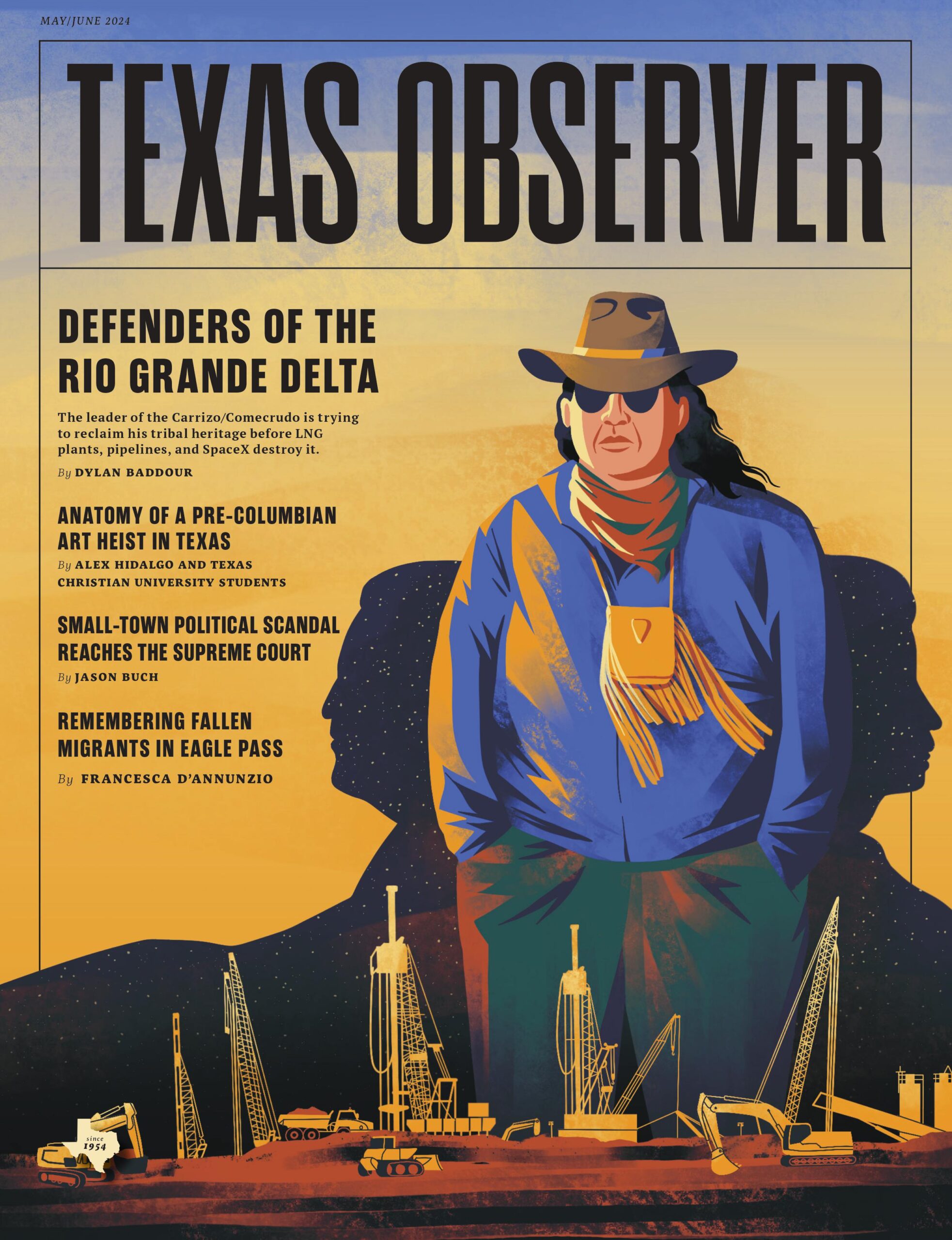ustxtxb_obs_1975_04_11_50_00008-00000_000.pdf
Page 15
Thicket still threatened By Pete Gunter Denton On Oct. 11, 1974, President Gerald Ford signed into law a bill creating a national Big Thicket Reserve of 84,550 acres in southeast Texas. Conservationists at last breathed easy. The bill was nqt everything that could be asked. \(Original proposals had projected a 196,000 acre wilderness better than nothing, and its congressional supporters \(Reps. Bob Eckhardt, Charles hard to secure its passage. At least, some fragment of the unusual Big Thicket Wilderness would be saved for the future. At least, somewhere in Texas the brush hog . and the power saw would not have complete and absolute dominion. Or would they? The bill that President Ford signed had many good features. It contained at least one sample of very nearly every kind of ecosystem that can be found in the Big Thicket. It included what is in effect East Texas’ first wild and scenic river: the Neches River Corridor, over 100 miles of remote canoeing, from Dam B on the north, south to the Beaumont city limits. It included sanctuary for plant and animal species growing increasingly scarce in Texas, and ‘ elsewhere. What it did not contain was a single nickel for purchase of land or, barring that, any legal means to safeguard the land within the reserve boundaries until it could be bought. The reserve was thus defenseless. Any part of it could still be ditched, clearcut, subdivided or all three. This time the problem is not the large lumber companies. Kirby, Southland, Champion, Time, Inc., et al., may not have repented their clearcut-pine plantation technology, but they have promised not to cut anywhere within the Big Thicket Reserve and, to date, they have kept their promises. Since the large companies own approximately one half of the reserve, this is no small matter. On the other half, the potential for destruction is large. The problem is with the smaller landowners. Some do not believe the government will pay them fully for their lands; others say they will cut their timber “for spite” rather than let it fall into the hands of The Feds. The longer the wait for action, of course, the greater the damage that can be done. \(It is not a matter, incidentally, of evicting people from their homes. Few people live within the projected reserve and these can live out their lifetimes there without The ‘ ,lest’ action came quickly. First to The Roxas Observer suffer was the Hickory Creek Savannah, an upland area uniting longleaf pines, orchids, and a variety of other wildflowers, some rare. A real estate promoter brush-hogged half its acreage prior to putting in a trailer park. Next was a stand of virgin creek bottom hardwoods at the south end of the Turkey Creek Unit. The owner, it is said, cut out of sheer spite. Similar destructions now dot the map of the reserve. An oilwell road has been pushed into the recesses of the Lance from the oilfield road a 400-acre tract is to be clearcut as soon as the ground dries. \(Conservationists alternately pray for rain and look for a nature lover with an extra River frontage has been timbered at points along both the Upper and the Lower Neches River. Huge cypress have toppled west of the Neches, along the Pine Island Bayou corridor. To top it off, a plan has been revealed recently to establish a drainage district in southern Hardin County, opening up the swampy, often-flooded terrain for real estate promotion and, perhaps, some rice farming. Drainage projects connected with the district would directly threaten three interlocked areas in the Big Thicket Reserve: the Lance Rosier Unit, the Beaumont Unit, and the Pine Island-Little Pine Island Bayou Corridor. They would also ensure a steadily increasing rate of taxation for the people of southern Hardin County as new floodwaters caused by Roy Harn r i c ditching projects upstream necessitate new ditching and levee projects downstream, and so on ad infinitum. The drainage district has failed to gain support from the Hardin County commissioners court, and has been turned down by the city council of Lumberton, the district’s largest and most floodable community. It can still be created, however, by the Texas Legislature, whose sterling record on environmental affairs is well known. If there was ever a bill that should be allowed to die peacefully in committee, this is the bill. \(Rep. Herman Adams of Silsbee has not yet introduced this bill, but apparently plans to do so. According to his aide, Adams’ bill would permit Hardin County folks to vote on whether they want such a Meanwhile, Congress does what it does best nothing. This is not to say that Representatives Eckhardt and Wilson are sitting still. They have introduced a bill to permit “legislative taking” \(the power to reserve and are working for land purchase funding. Nonetheless, bulldozers, brush hogs, and power saws work quickly; legislative processes emphatically do not. Granted that there are other problems to attend to, but it is inexcusable for government to sit by while the last remnant of a uniquely valuable environmental area is left open to destruction. It is time, once again, to plead with the Congress for the life of the Thicket. +.***weeel ;++ yvt oft.t. ,


